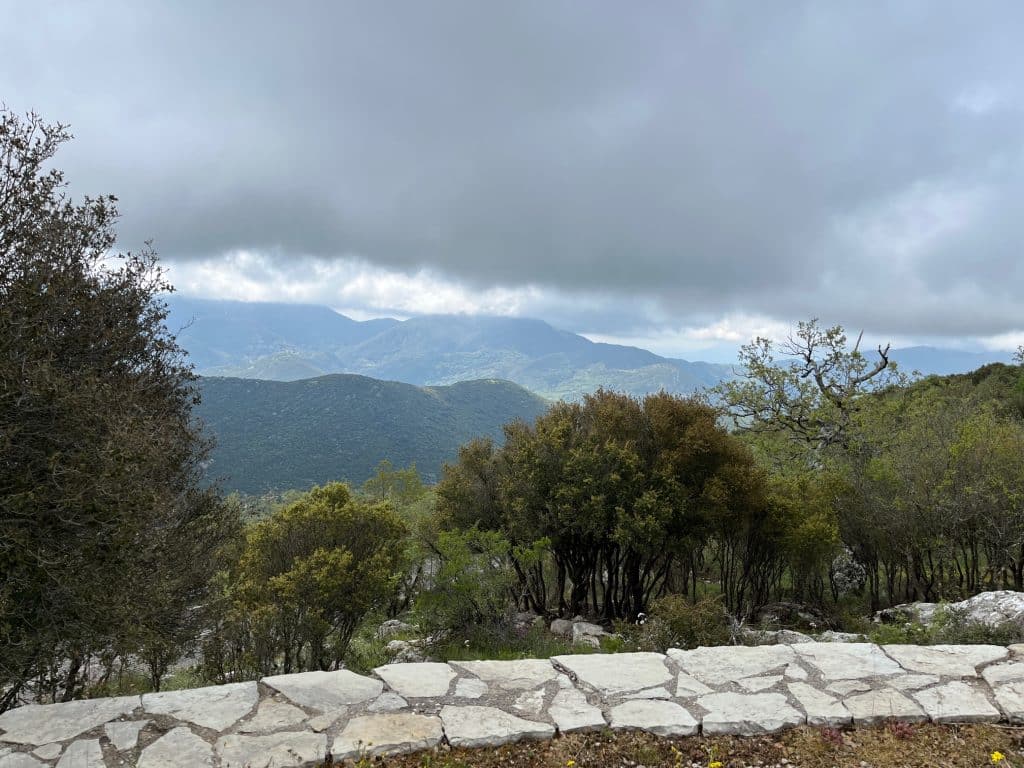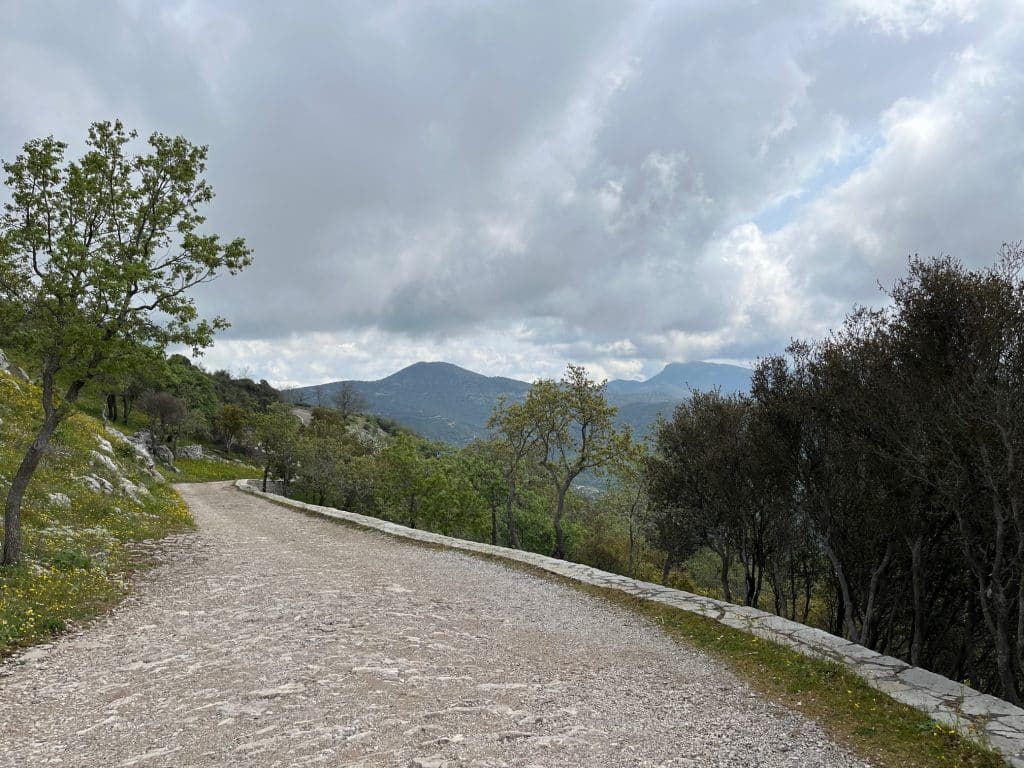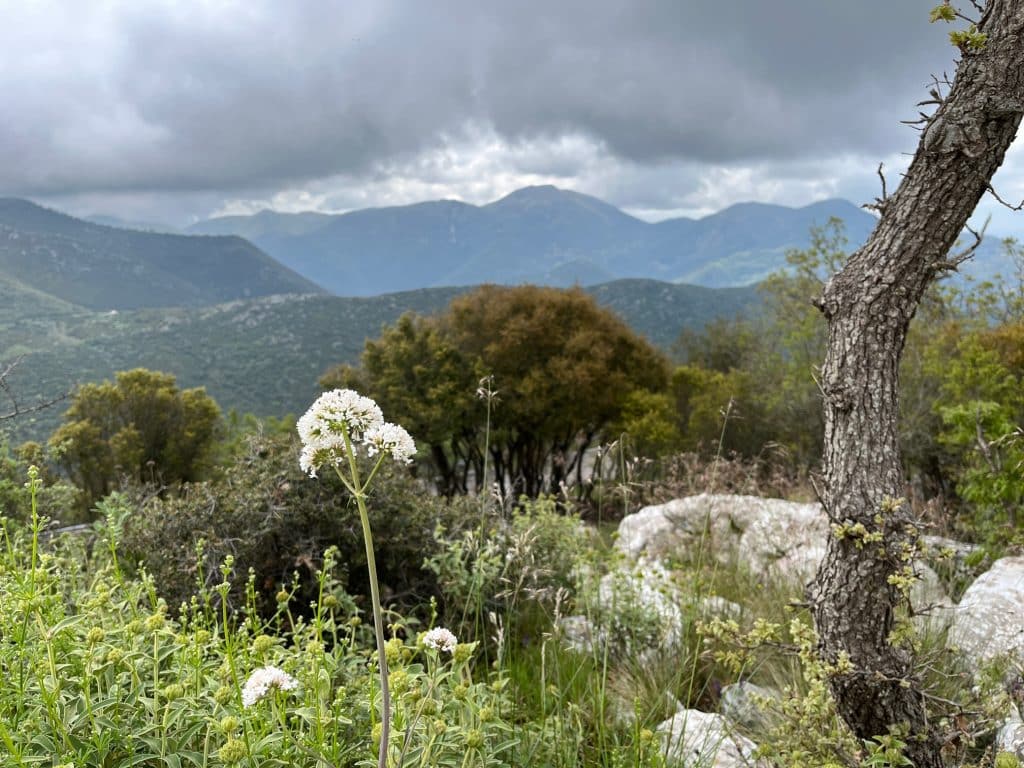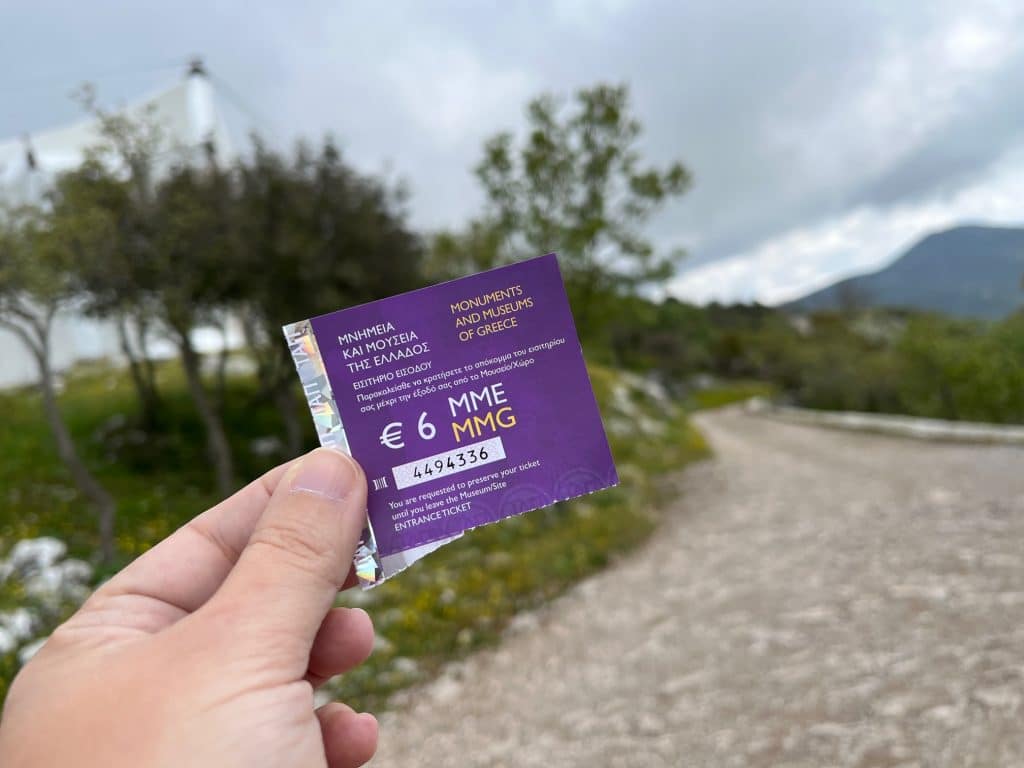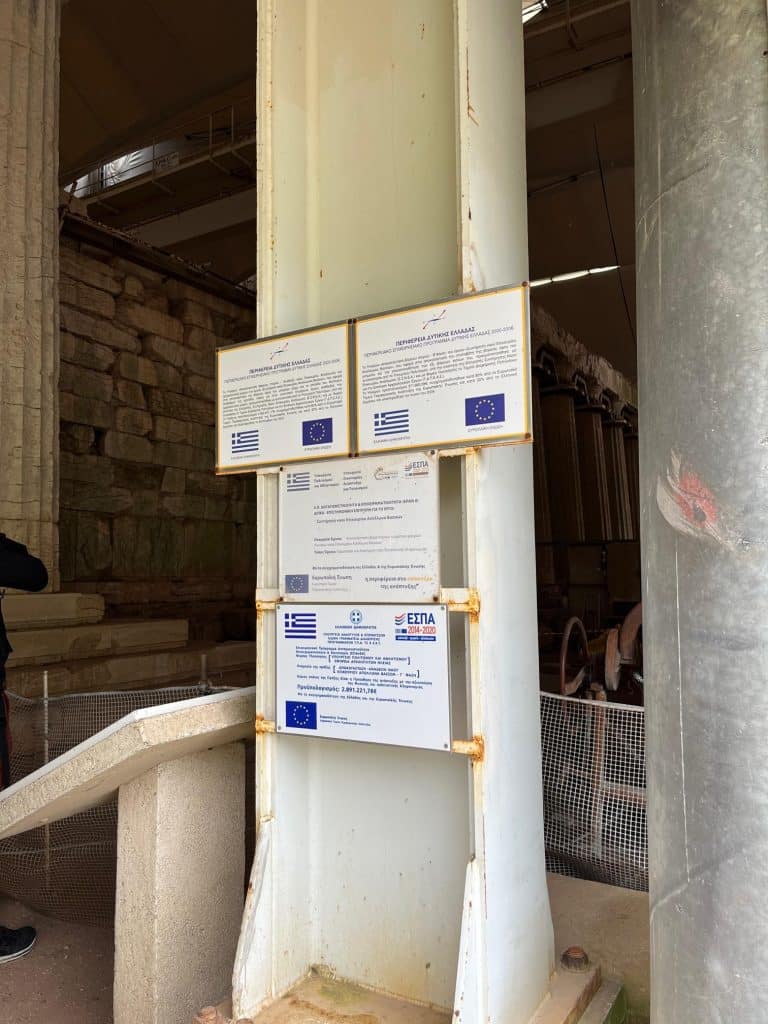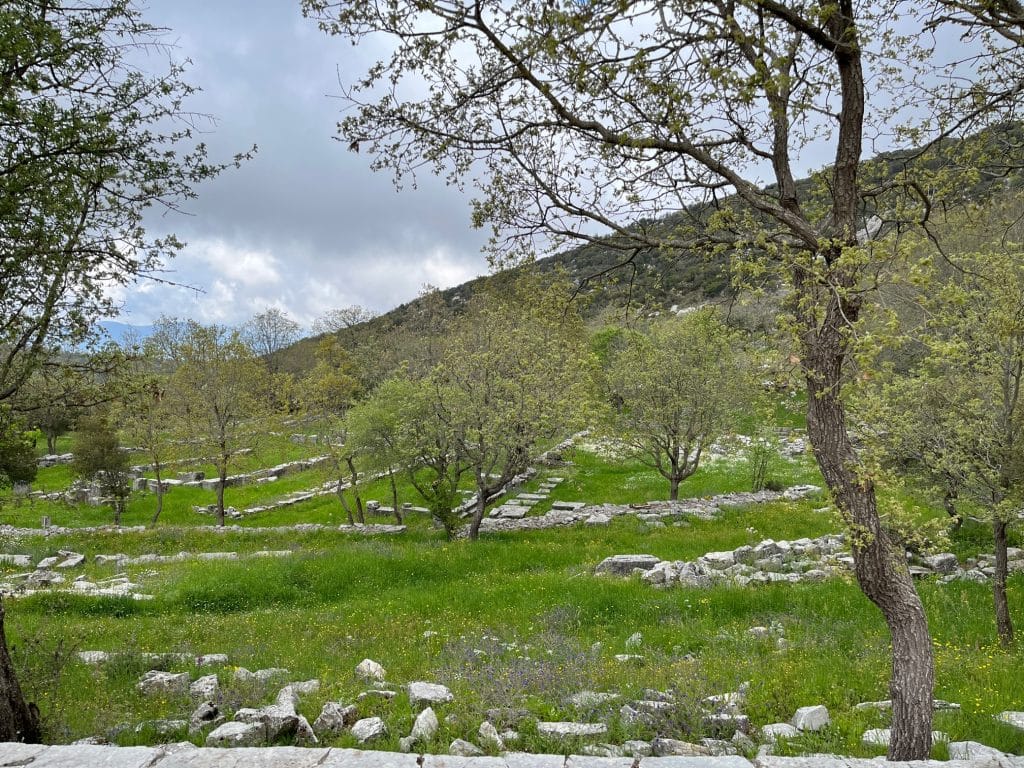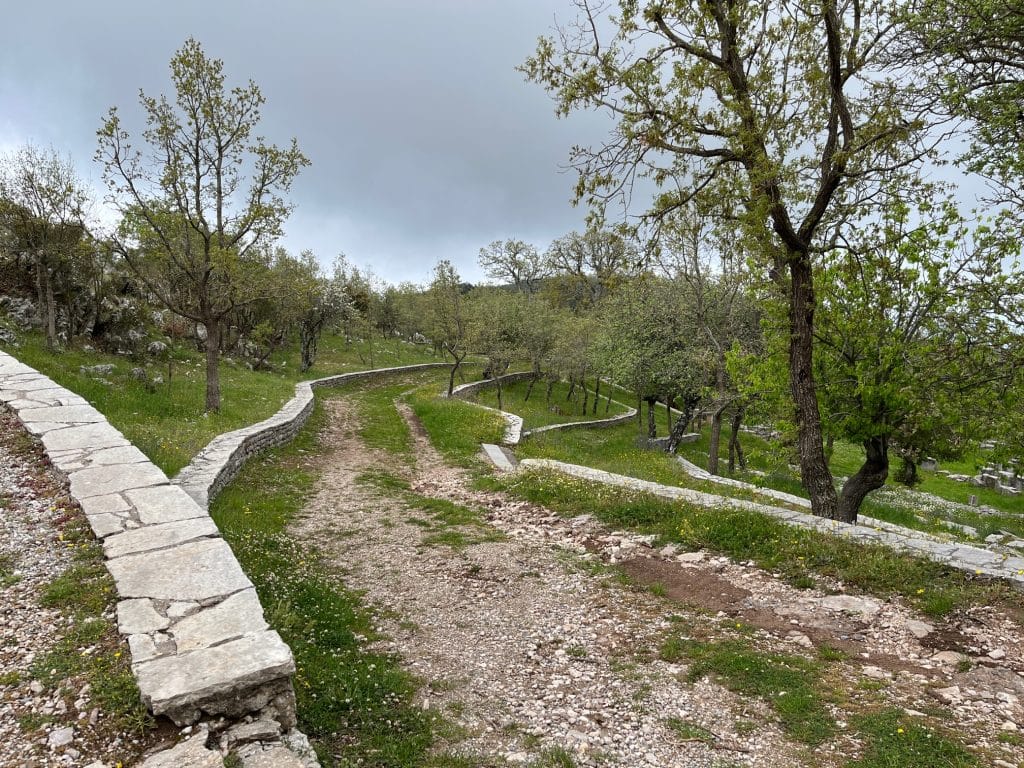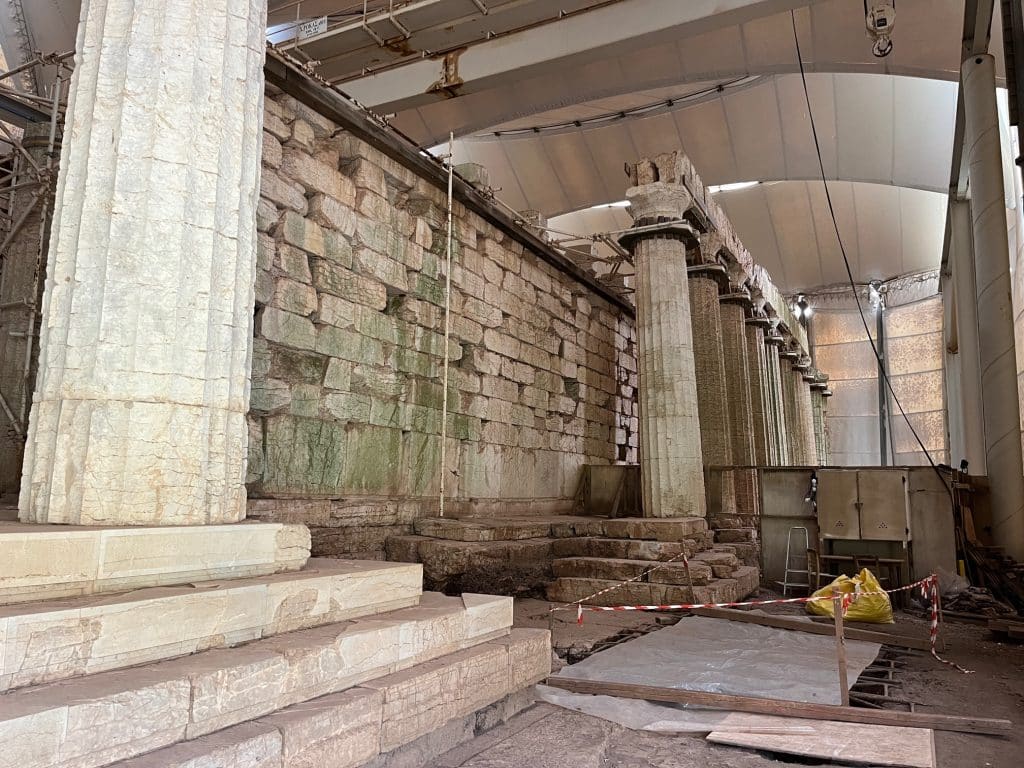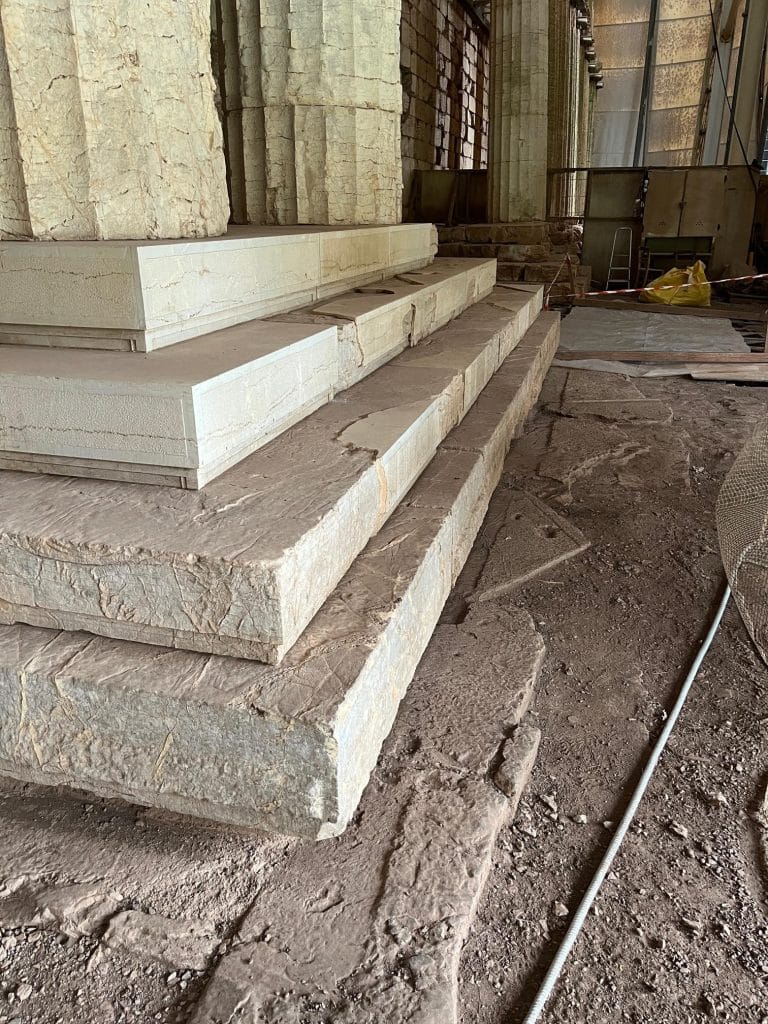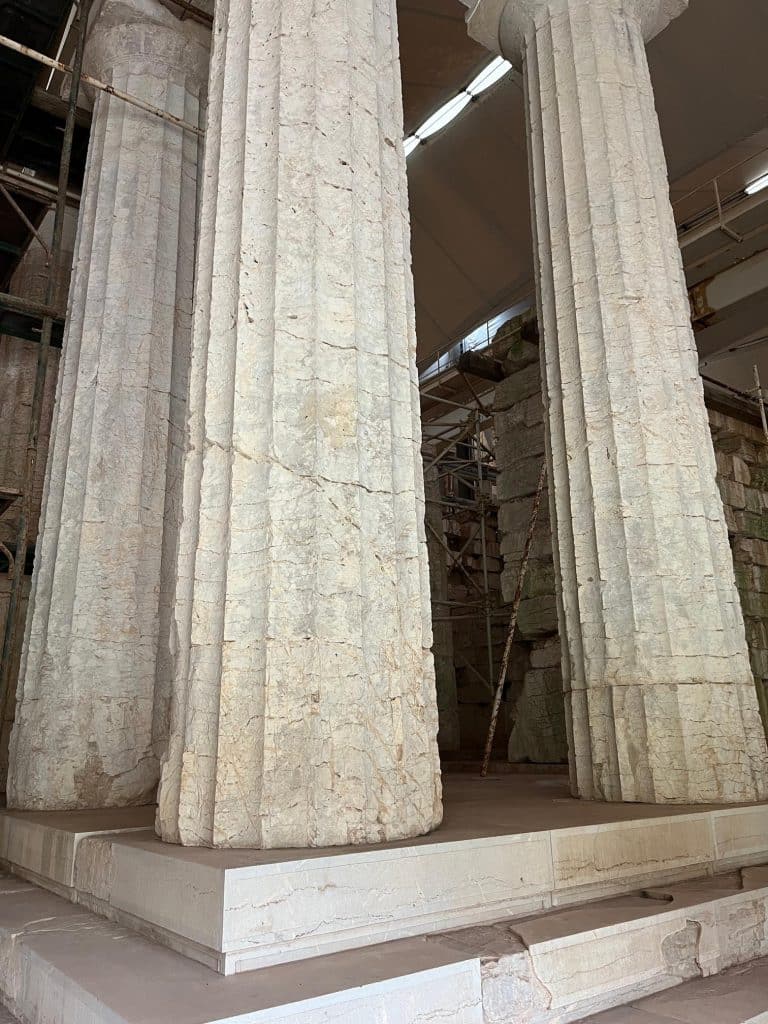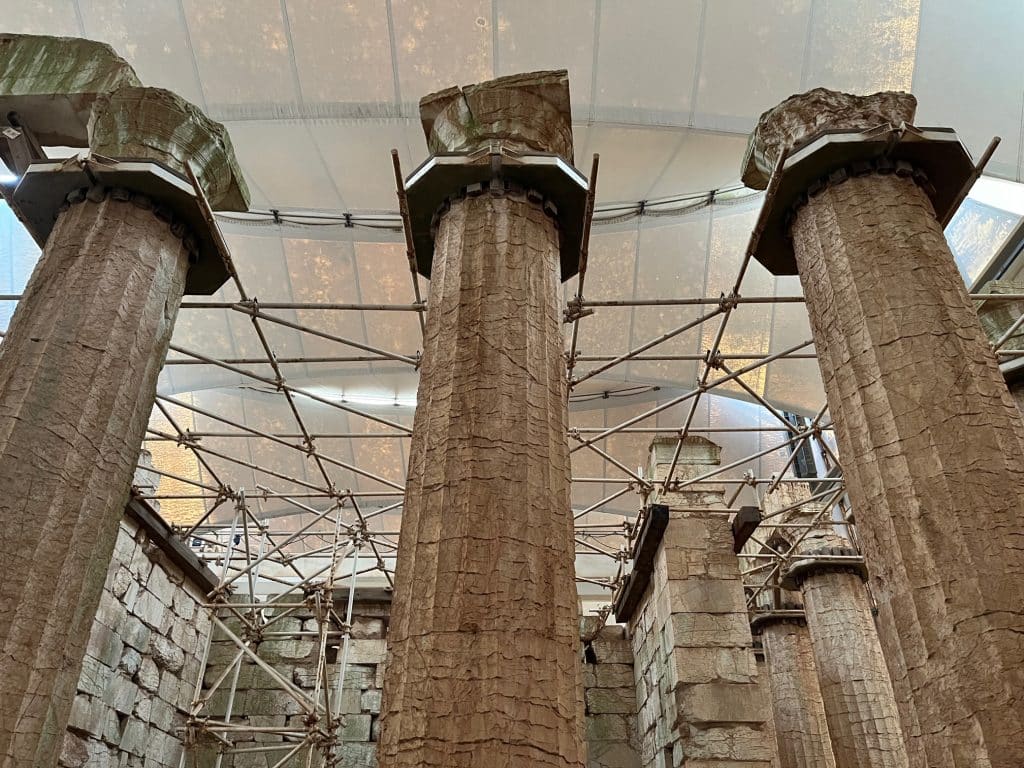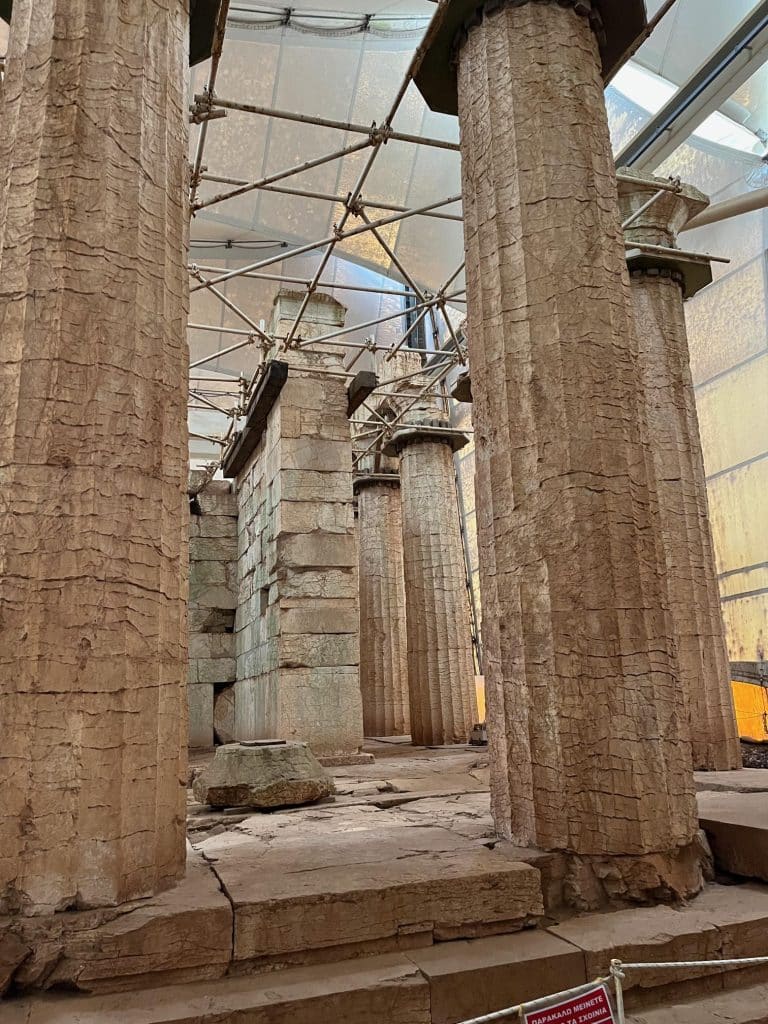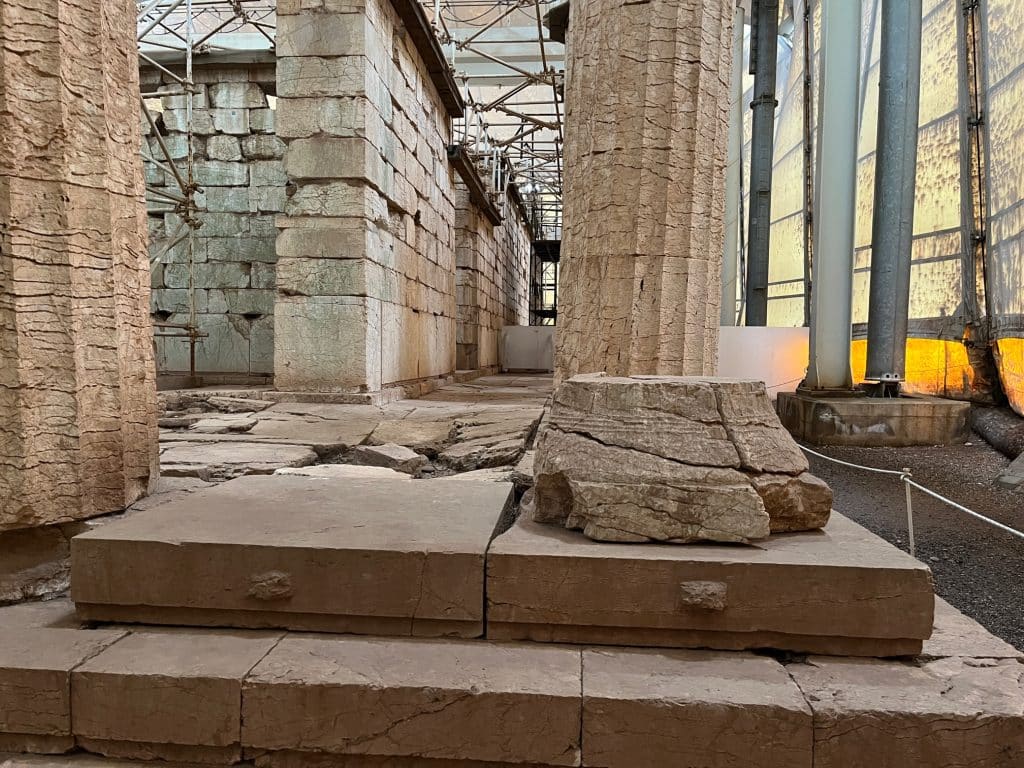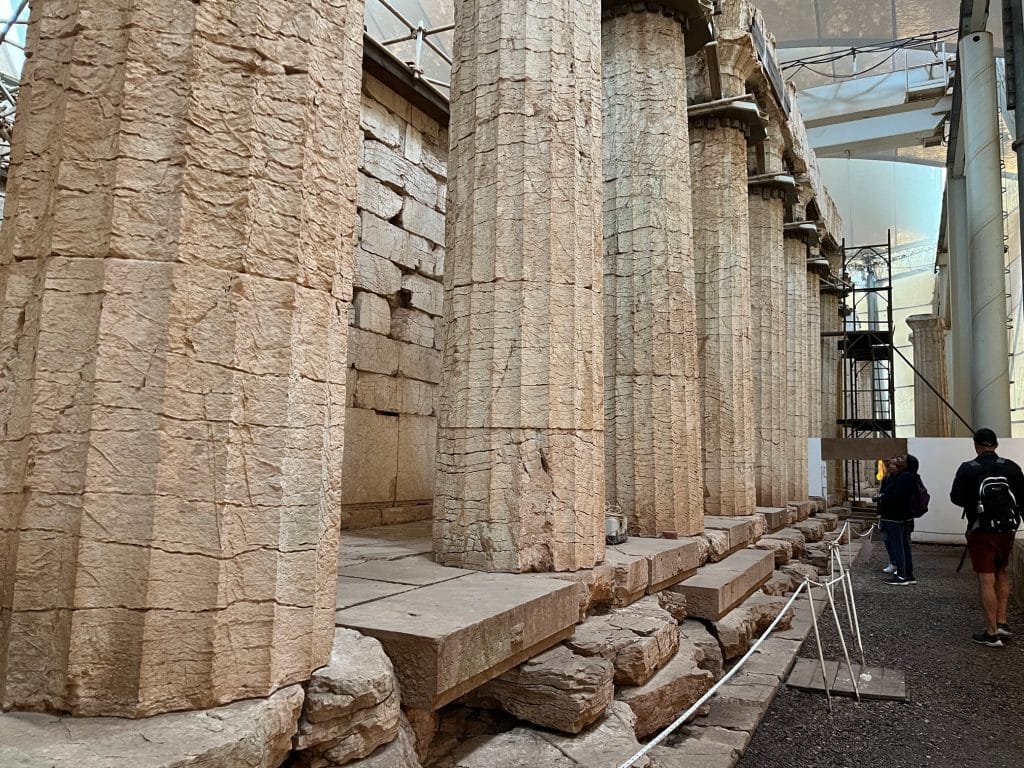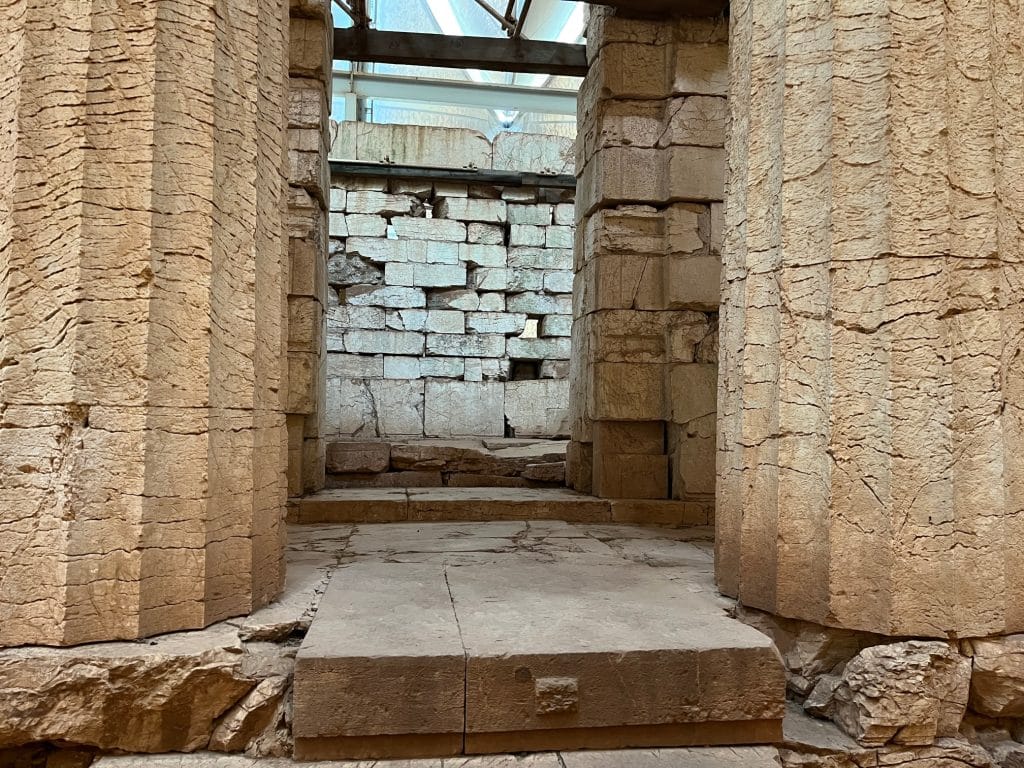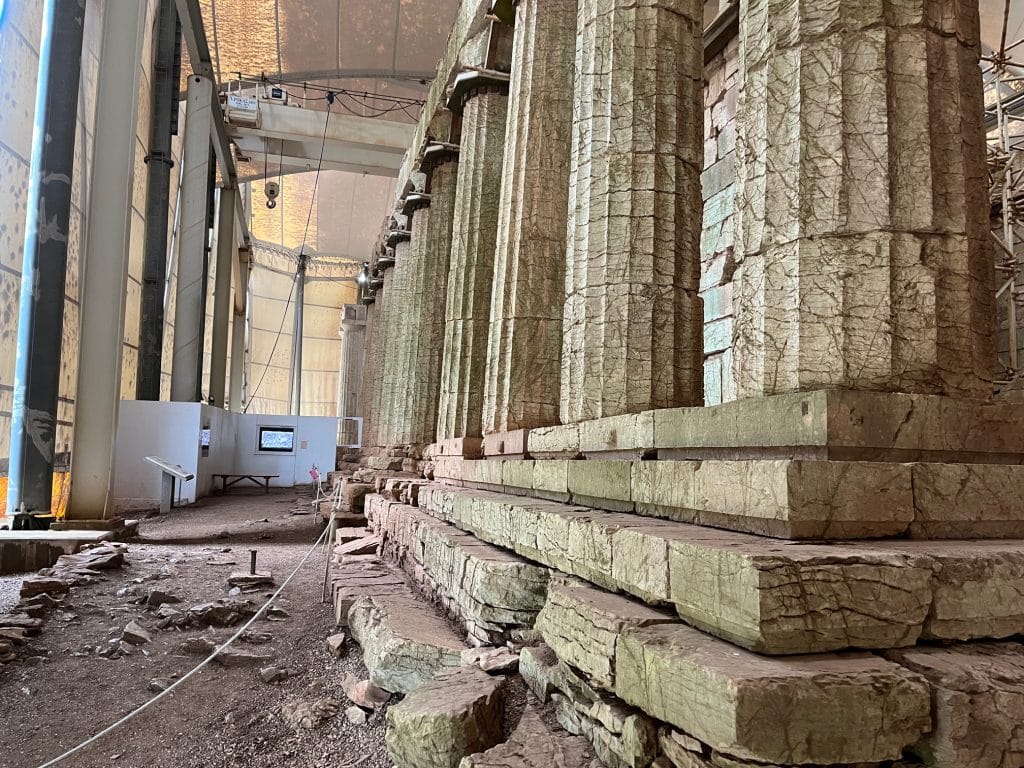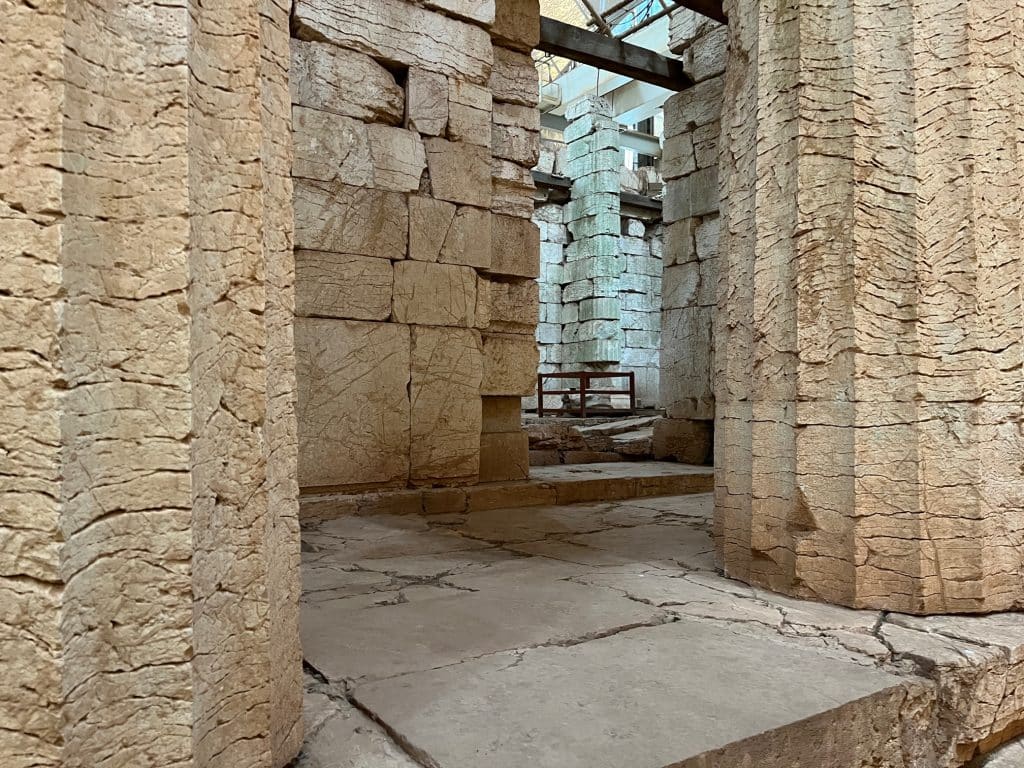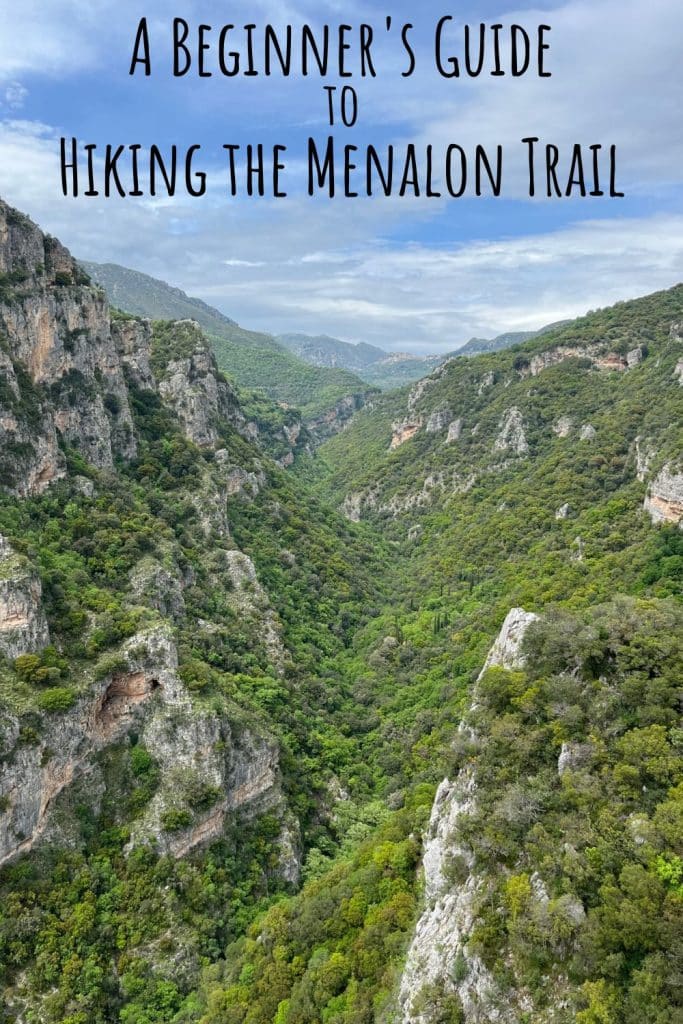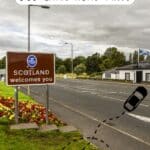A Guide to Visiting the Temple of Apollo Epicurius
Planning a visit to Greece? Get off the beaten track and adventure into the mountains of the Peloponnese. The ancient architectural ruins of the Temple of Apollo Epicurius at Bassae are not to be missed. This guide explains what you can expect when visiting this remote historical marvel. You’ll also discover everything else you need to know to plan your trip.
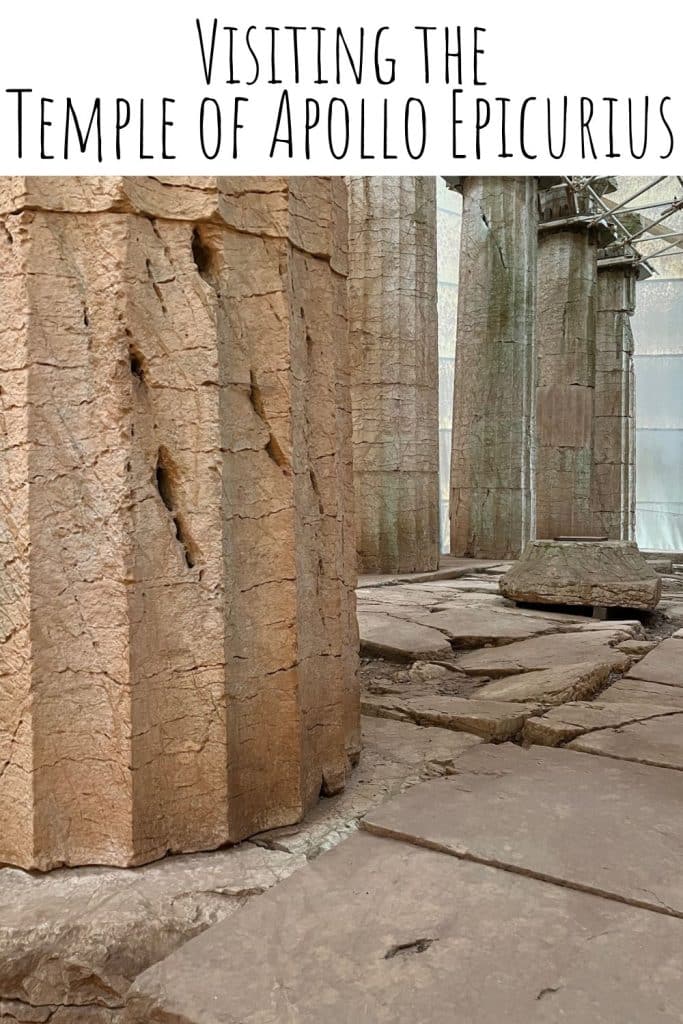
We left Kalamata at what felt like a super early time, but was actually quite a reasonable hour. The drive took roughly two hours, so is completely doable if you’re using Kalamata as a base. The road gets quite windy as it climbs up the mountain and I had a wave of motion sickness that caught me off guard. Thankfully our lovely driver pulled over before I completely embarrassed myself and we were all able to take a breather next to a small field of wildflowers. We carried on to the top of the mountain where the temple stood proudly, even under its covering. One could just imagine the temple in all of its glory overlooking the land around it.
What is the Temple of Apollo Epicurius at Bassae?
A marvel of classic Greek architecture and cultural heritage, the Temple of Apollo Epicurius at Bassae was built by the Phigaleians between 420 and 400 BC and stands atop Kotilio Mount in Messinia, part of the Peloponnese region in Greece. This 5th-century tribute to Apollo–the god of light and sun–is part of their appreciation of him for protecting them from plague and disease. Ikitinos, the architect of the Parthenon in Athens, also designed this temple.
The temple is located approximately 230 km south of Athens nestled in the Arcadian mountains, in the valley of Bassae and flanked by the adjoining mountains of Tetrazio, Lykaio, Kotylio, and Elaio near the ancient Greek city of Phigaleia. Modern thinkers might believe the temple’s name is a reference to food, as epicurious is often attributed to meals and dining, but its proper name, Apollo Epikourios, means “Apollo the helper,” a reference, of course, to his protection.
Features of the Temple of Apollo Epicurious
For those who only partly paid attention to high school history, architectural terms like Doric and Ionic may trigger a bit of Ancient Greek knowledge. Visitors to the Temple of Apollo Epicurius will encounter each of these and a third-column style, known as Corinthian. The temple is the earliest monument to include all three.
Architecturally, the Ionic Bassae served as inspiration for numerous buildings; modern and historical, including parts of Oxford University’s Ashmolean Museum and Taylorian Institute. Architects of The Department of Justice and Union Station in Washington DC and the Church Hill Bank in Virginia also took inspiration from the temple.
The monument features six columns across the front and 15 along its length. As you approach, these features are hidden by a protective tent, installed in the late eighties to protect the limestone temple from the elements. In the 19th century, part of the temple was removed; the majority of the frieze–a length of decorative panel–is currently on display at The British Museum in London. The frieze depicts the battle between the Centaurs and Lapiths and the Greeks and Amazons. The frieze was auctioned off during Ottoman rule–Greece has asked for it to be returned as part of the restoration process, but The British Museum has said no with the opinion that more people will see it at the museum than in the temple. If you’ve known me for any amount of time, you’ll know that I am fully in support of the frieze being returned. The remaining frieze is housed at the National Museum in Athens.
How to Get There
Many visitors opt to hike to the temple, although it is in a very remote location so finding a tour can be a challenge. However, Trekking Hellas offers a hike and it is now on the list of things I would like to do. The trail to reach the temple is one of Greece’s least well known, so that immediately has me extra interested. Typical hiking gear is recommended, including long pants, shoes with grip, a small pack, sunglasses and sunscreen, a water bottle, and a waterproof jacket. The tour is typically not recommended for children under the age of 7. If you do opt to drive like we did, be mindful of the winding roads, because, as stated, the temple is located in a mountainous and remote region and roads are often littered with rock and debris.
Renting a car in Greece is not as difficult as you’d expect; in fact, it’s a great way to explore and visit additional UNESCO sites, especially remote ones like the Temple of Apollo Epicurius. If you’re used to driving in the States or many parts of Europe, driving is done on the right side of the road, so there won’t be a learning curve in that regard. You will, however, need to obtain an International Driving Permit if you would like to rent a car in Greece (I know there are mixed thoughts on that but I always feel better safe than sorry!). Here are more tips and tricks for renting a car in Europe.
What to Expect at the Temple of Apollo Epicurius
You won’t be able to get your typical vacation selfie with the temple as your backdrop, as it does sit underneath the shelter of a tent, but visitors are encouraged to roam the ruins beneath its canopy. Among the columns, you’ll notice the external columns are Doric while the internal columns are Ionic. The large Corinthian capital column, which is said to possibly represent Apollo himself, was lost to wear and/or looting. The roof is designed of marble.
You’ll also discover the adyton; a special area built as a shrine to Apollo. And, unlike the majority of Greek temples, Apollo Epicurious lies from north to south rather than east to west; likely due to mountain slopes. Because it is an active archaeological site, of course, there are areas that are off-limits to visitors. Regardless, the depth and breadth of discovery remain evident at every turn.
Architectural Discoveries
Architectural excavations have come to show that the Temple of Apollo Epicurius was not the first ancient temple on this site. The current temple’s foundation atop Kotilio Mountain is built upon artifacts from the 5-7th centuries. Of these are those of terracotta detail as well as artifacts from the Geometric era.
A Little Research Before You Go
One of the best parts of traveling is expanding upon what was learned during school (or what was left out). A visit to the Temple of Apollo Epicurius at Bassae leaves countless bits of information that can (and should!) be researched further. One of these includes using books to bring history to life. And, if you’re traveling with the family, don’t forget to check out these Greek Mythology books for teens. I always leave a new place with book titles or notes to look things up.
These are affiliate links.
Apollo: The Origins and History of the Greek God by Andrew Scott
In this book, which includes extensive photos, Scott does a good job of explaining why people worshipped Apollo and what was going on in the world at the time.
Greek Sanctuaries and Temple Architecture: An Introduction by Mary Emerson
Emerson introduces the topic with no assumptions about the reader. This book is a great resource for those not familiar with Greek architecture.
Forgotten for centuries, the Temple of Apollo Epicurius at Bassae was accidentally rediscovered in 1765. Over the years the temple was restored by the Greek Archaeological Society, though it had suffered significant damage due to the elements and looting. In 1987, a year after it was added to the UNESCO heritage list, a canopy was installed to ensure that it could be enjoyed by visitors for many years to come (they are hoping to install a new tent soon that will have a clear top). Visiting the Temple of Apollo Epicurius is an amazing off the beaten track excursion that will get you addicted to exploring the wonders of hidden ancient Greece.
For more off the beaten track hidden gems, look into hiking the Menalon Trail.
